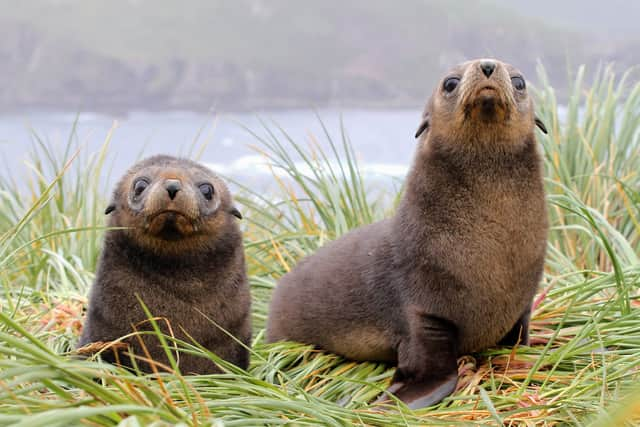Antarctic fur seals: species once hunted to near extinction has bounced back - but is now going hungry
and live on Freeview channel 276
One of the icy continent's biggest conservation success stories is at risk of coming unravelled, as new research suggests Antarctica's fur seals are now declining once more for a new reason - lack of food.
New research by British Antarctic Survey (BAS) scientists published on Monday (16 October) in peer-reviewed climate science journal Global Change Biology, found the modern-day fur seal population likely peaked at about 3.5 million in 2009. But a more detailed count of animals living on one particular South Georgia island, called Bird Island, also suggested the seals were now finding it harder to catch enough krill to eat - with numbers starting to crash once again.
Advertisement
Hide AdAdvertisement
Hide AdLead author Jaume Forcada said the study meant both good news and bad news for the species, which were hunted for their pelts in the 1700s and 1800s. By the early 1900s there were too few animals left to hunt them commercially.
"The population has recovered very impressively throughout the twentieth century when seal hunting was banned," he said. "But twenty-first century changes to the abundance of krill in the Southern Ocean are now threatening these iconic animals all over again.”


For the Bird Island fur seal population, numbers have dropped by about 7% each year since 2009. It had taken the island’s current population down to a level not seen since the 1970s, when the species was still recovering. Analysis of climate data showed that that rapidly rising sea temperatures in the region correlated with the seal population declining - pointing to a loss of krill as the most likely cause.
“Krill can make up to 80% or more of the diet of fur seals at South Georgia, so they experience catastrophic declines in the number of pups produced and survival of individuals when environmental conditions remove the krill from their immediate foraging areas,” Dr Forcada said. More research was needed to find out why krill around Bird Island were now less available, he said, and how widespread the change could be across the rest of the Southern Ocean.
Advertisement
Hide AdAdvertisement
Hide Ad“If the pressure on the fur seals at Bird Island also applies to the greater South Georgia population there could be an ongoing decline there as well. So even though there were three and a half million of them there, the fast decline at Bird Island tells us they could be in trouble."
Krill are also a major food source for Antarctica's whale and penguin species. The tiny shrimplike crustaceans are the backbone of the region's food chain, but previous studies have noted numbers have declined by as much as 70 or 80% in some areas - with climate change believed to be a major driver of their loss. Scientific American reports that scientists have found krill need sea ice to form by a particular time to survive their first winter - something the BAS has already recorded changing, with catastrophic impacts on Antarctica's wildlife.
While numbers had bounced back, Dr Forcada said his team also discovered the fur seal recovery story had not been quite as successful as experts believed. By the year 2000, South Georgia was believed to be home to between 4.5 million and 6.2 million fur seals. However, re-examination of this data and the methods used suggests that these booming population numbers were not accurate.
“Our new results show this was a massive overestimation," he said. "That matters because the fur seal population size is used to judge the overall health of the species and the wider Antarctic ecosystems. And it turns out that neither were as robust as people thought.”
Comment Guidelines
National World encourages reader discussion on our stories. User feedback, insights and back-and-forth exchanges add a rich layer of context to reporting. Please review our Community Guidelines before commenting.
